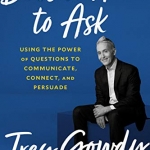For Business Bloggers, the First things is Finding New Things to Say

Gerald Ford must have had blog marketing in mind when he stated, “When a man is asked to make a speech, the first thing he has to decide is what to say”.
Copyblogger’s Liz Fulghum knew that, too. Back in 2008, Fulghum suggested that blog platforms come with a warning notice:
Blogging is not easy. You may experience unexpected droughts of inspiration, difficulty maintaining a schedule, or succumb to the pressure of always needing fresh content.
Business bloggers often confide they have trouble continually coming up with fresh ideas for their blog posts and finding new ways to talk about the products and services they offer. In this, the #1898 of the Say It For You blog, we have several blog “starter kit” models to offer:
Kit #1 – “Interview questions”
How did you arrive at the name for your business? For services or “packages” you offer? What do the names say about the outcomes you hope to bring for your clients and customers? What’s the biggest mistake you feel you’ve made in starting your business and what have you learned from that mistake?
Kit #2 – “Collating”
Collect information from different sources on a specific topic related to your business and organize the information in a new way. Use content from your own former bog posts, newsletters, and emails, adding material from other people’s blogs and articles, from magazines and book, summarizing the main ideas your readers are likely to find useful.
Kit #3 – “Curating”
Find opinion pieces that relate to your industry, quoting from those and then expressing your own unique perspective on that topic.
Kit #4 – “Listicles”
Listicles round up existing content pieces and present them in the form of numbered lists – of tactics to try, alternatives for solving a particular problem, or “best of…” compilations.
Kit #5 – “Changes of heart”
Go back and read your own past blog posts – the further back the better. Has experience – or have outside factors – caused you to change your mind on any of those statements? How? What factors caused your change of heart?
Kit #6 – “In the now”
Enter trending “conversations” about topics in the news. Scour the daily news and pay attention to talk shows, finding “hooks” to promote your products or services by weighing in on current concerns.
Blogging wasn’t yet around in the Gerald Ford era, but the former U.S. President was certainly right about this one: When a man (or woman!) is asked to make a speech (or compose a blog post!), the first thing to decide is what to say.
Keep your blog starter kit stocked and ready to wow!





Follow us online!